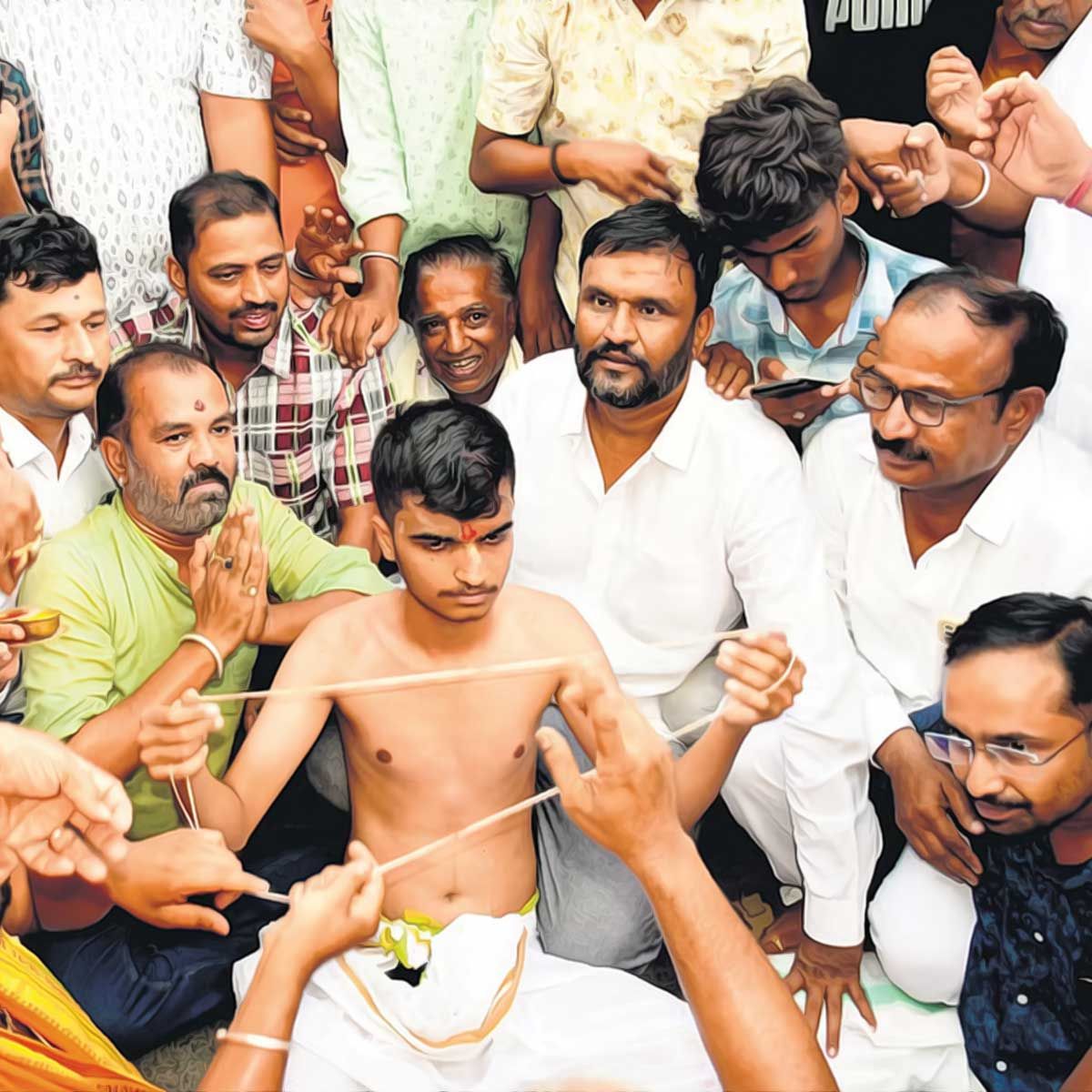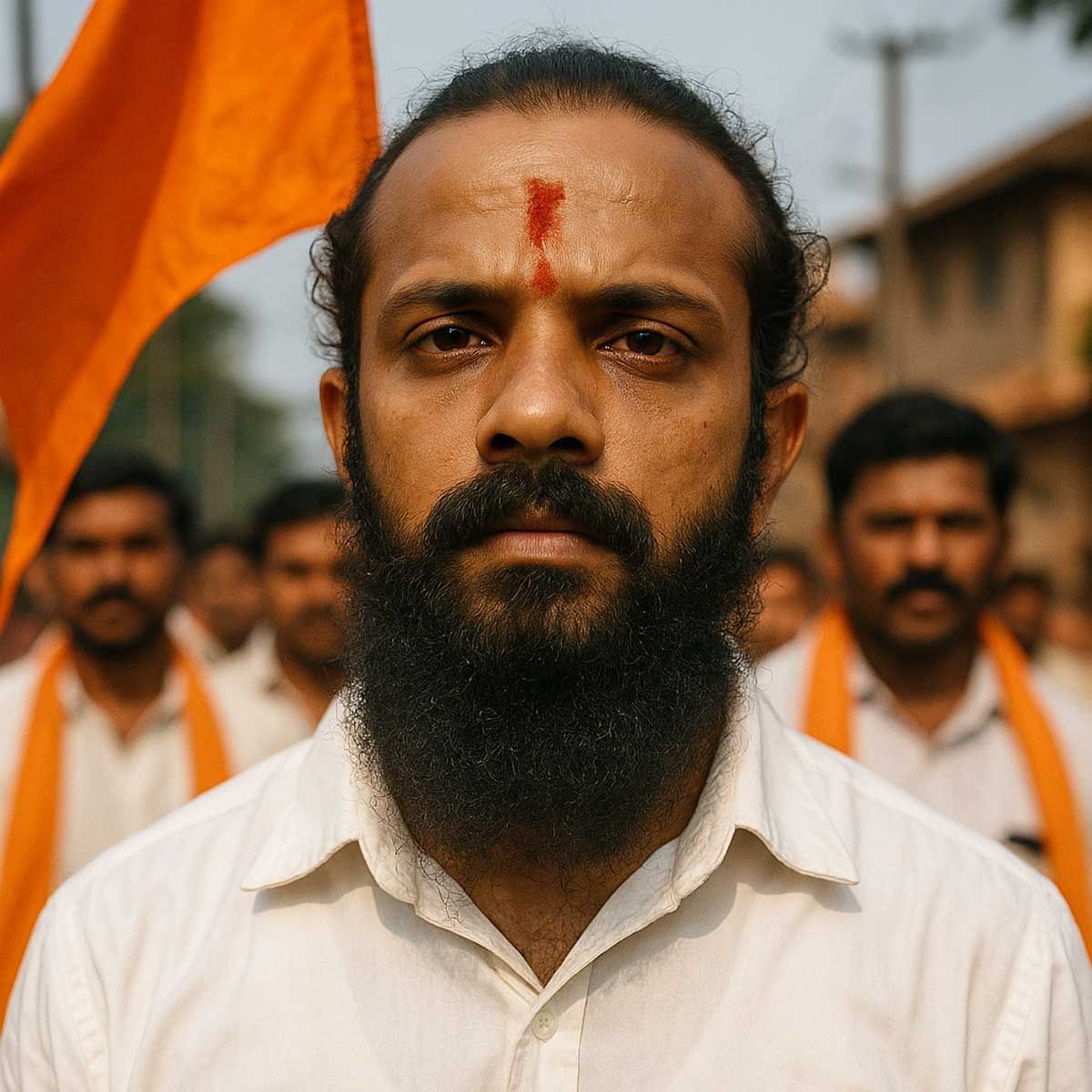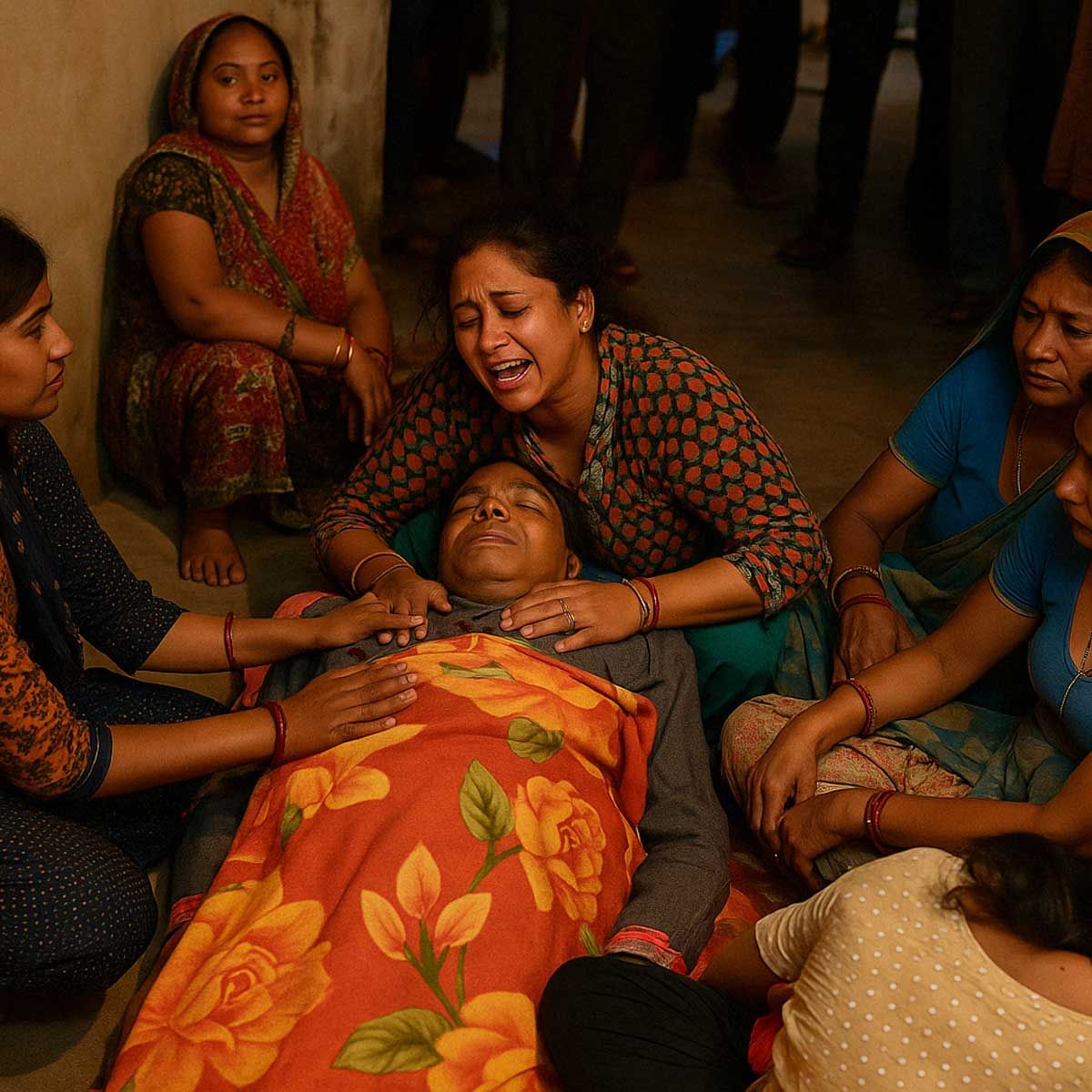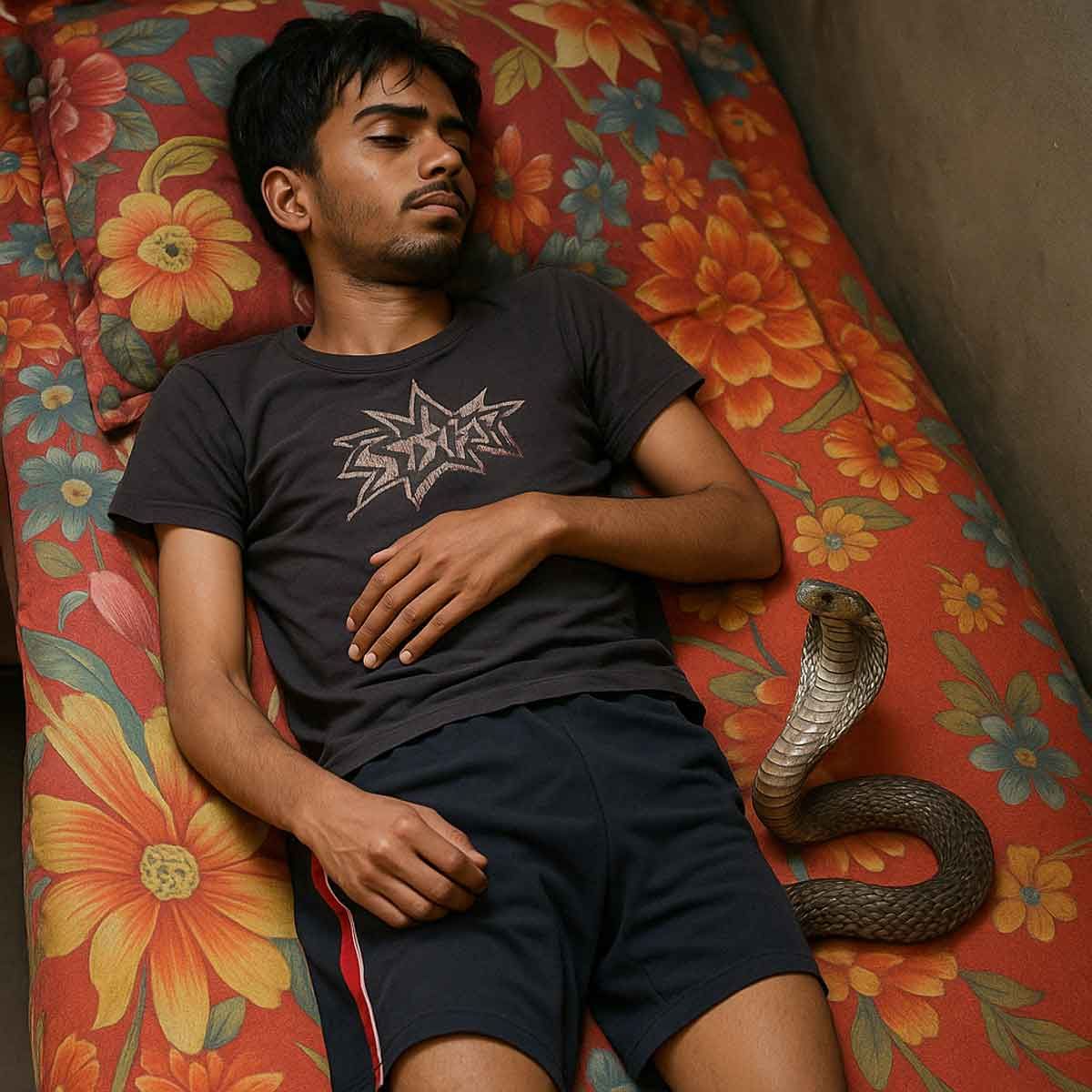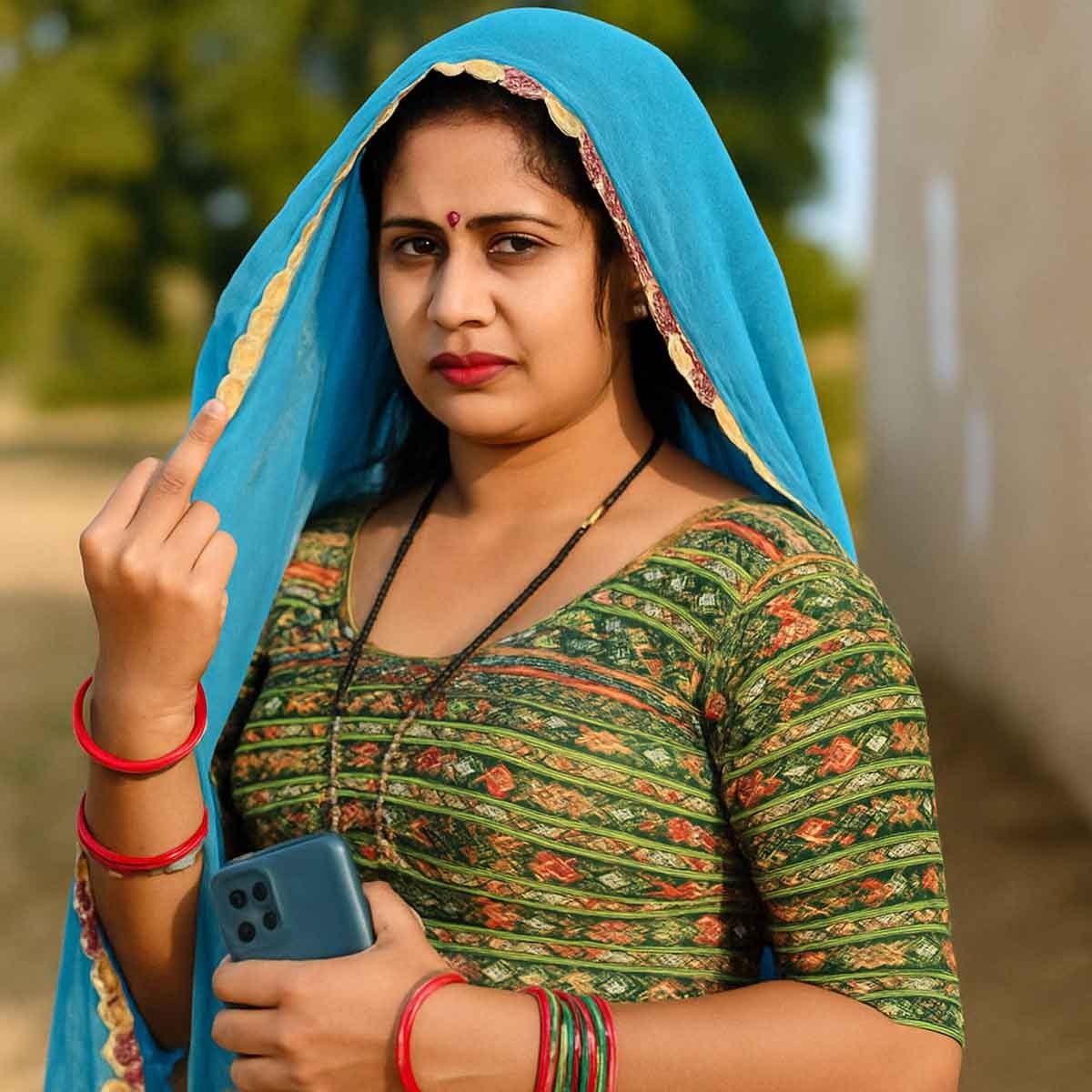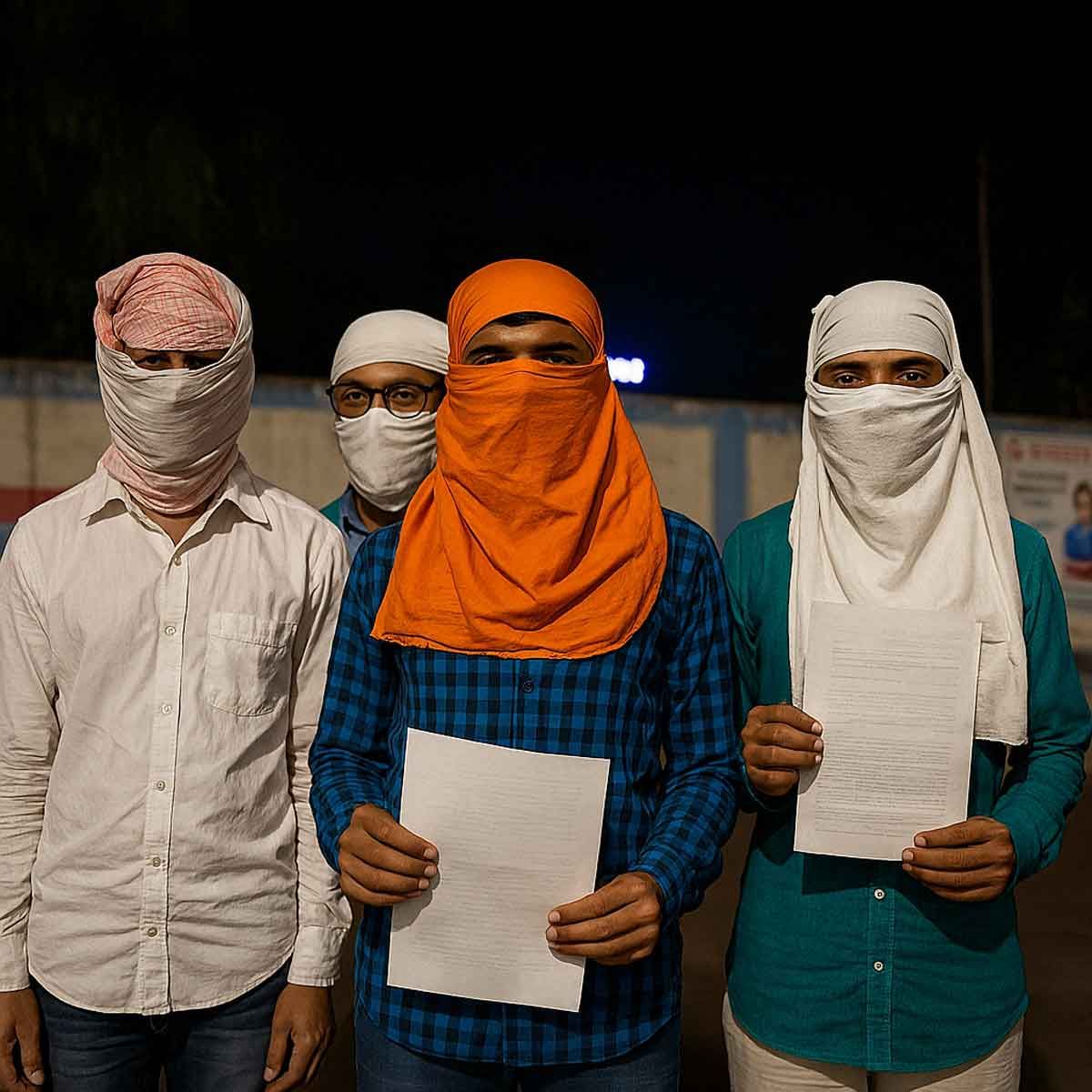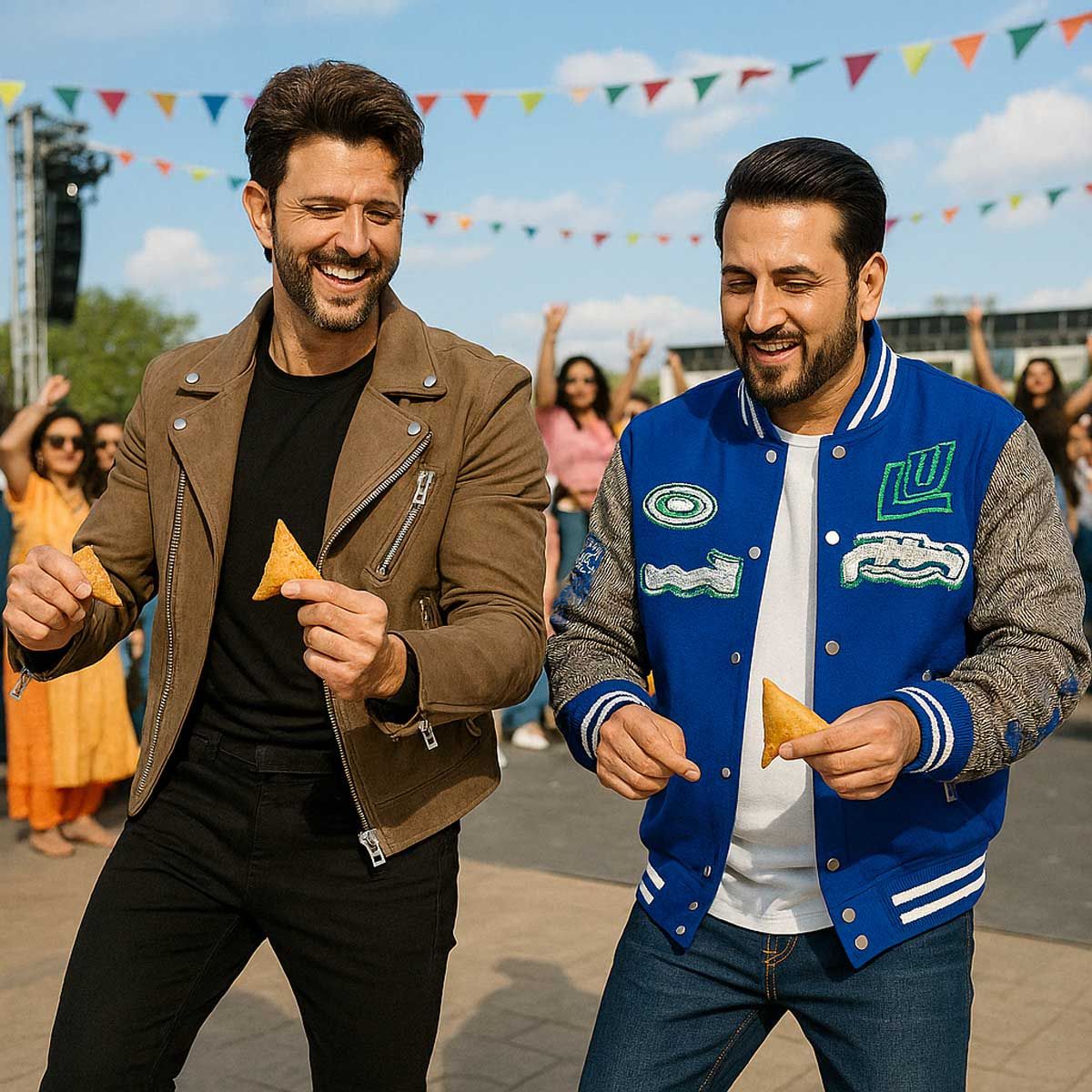More Coverage
Twitter Coverage
Satyaagrah
Written on
Satyaagrah
Written on
Satyaagrah
Written on
Satyaagrah
Written on
Satyaagrah
Written on
JOIN SATYAAGRAH SOCIAL MEDIA
"If you have no enemies, you have no character. Taking a stand always creates opposition": New drama unfolding in the grand theatre of Indian politics, desperate opposition parties to challenge BJP by joining hands with simple strategy - unite and fight
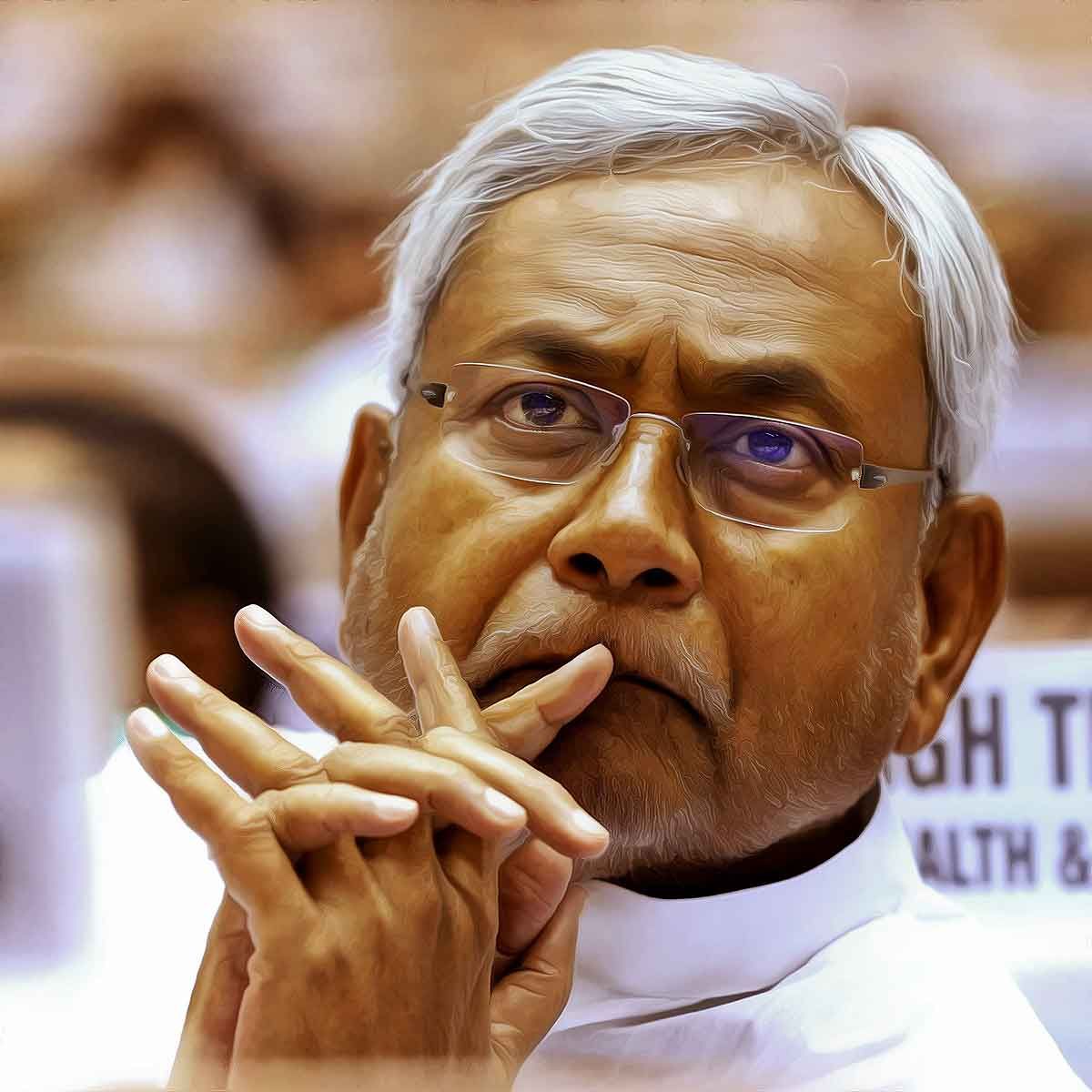
In the grand theatre of Indian politics, a new act is unfolding. The opposition parties, in a desperate bid to challenge the ruling Bharatiya Janata Party (BJP), are joining hands. It's a spectacle that would make any political analyst chuckle. The stage is set, the actors are ready, and the audience is waiting with bated breath. Will this grand alliance of opposition parties be able to pose a credible challenge to the BJP? Or will it crumble under its own weight? Let's dive into this intriguing political drama.
|
The Indian political landscape is dominated by the BJP, led by Prime Minister Narendra Modi. The party has been in power for two consecutive terms and has made significant inroads into various states. However, the opposition parties, which have been on the back foot for a while, are now attempting to regroup and present a united front against the BJP.
The opposition's strategy is simple - unite and fight. They believe that by coming together, they can pool their resources and voter base to challenge the BJP. The idea is to move forward with a common minimum programme, focusing on issues that resonate with the masses. Bihar Congress Chief, in an interview with Devdiscourse, emphasized the need for the opposition to move forward with a common minimum programme.
The unity of the opposition was on full display at a mega opposition party meeting held in Patna. The meeting, reported by India Today, saw the participation of prominent leaders like Arvind Kejriwal, Rahul Gandhi, Mamata Banerjee, and MK Stalin. The meeting was seen as a significant step towards forging a united opposition front against the BJP.
However, not all opposition parties were on board with this unity mission. The Rashtriya Lok Dal (RLD) chief Jayant Chaudhary decided to skip the Patna opposition meet, as reported by the Indian Express. This decision highlighted the challenges in bringing all opposition parties under one umbrella.
|
The opposition's unity mission is not without its share of troubles. The BJP has been quick to slam the opposition's unity efforts, terming it a desperate attempt by the opposition to stay relevant. The BJP state president Samrat Choudhary, in an interview with Hindustan Times, termed the opposition unity a "myth".
The opposition's unity mission is also fraught with contradictions and differences. As pointed out by Rakesh Tiwary, a social scientist associated with AN Sinha Institute of Social Sciences, Patna, the success of opposition unity would depend on the cohesion among various partners. There is still a lot of contradiction among regional forces, which could pose a challenge to the unity mission.
The grand opposition meeting in Patna, called by Bihar Chief Minister and Janata Dal (United) leader Nitish Kumar, saw a galaxy of leaders from nearly 20 parties converging to chalk out a joint strategy to take on the Bharatiya Janata Party (BJP) in the upcoming Lok Sabha elections. The meeting was seen as a significant step towards showcasing opposition unity against the BJP.
The attendees of this mega meeting were a who's who of Indian politics. The list included:
- Rahul Gandhi, Leader of the Indian National Congress
- Mallikarjun Kharge, President of the Indian National Congress
- Mamata Banerjee, Chief Minister of West Bengal and Trinamool Congress (TMC) supremo
- MK Stalin, Chief Minister of Tamil Nadu and Dravida Munnetra Kazhagam (DMK) leader
- Sharad Pawar, Chief of the Nationalist Congress Party (NCP)
- Arvind Kejriwal, Chief Minister of Delhi and Aam Aadmi Party (AAP) supremo
- Bhagwant Mann, Chief Minister of Punjab and AAP leader
- Hemant Soren, Chief Minister of Jharkhand and Jharkhand Mukti Morcha (JMM) leader
- Mehbooba Mufti, Chief of Jammu and Kashmir's Peoples Democratic Party (JKPDP)
The agenda of the meeting was to formulate a joint strategy to challenge the BJP in the upcoming Lok Sabha elections. The opposition parties aimed to move forward with a common minimum programme, focusing on issues that resonate with the masses. The meeting was seen as a significant step towards forging a united opposition front against the BJP.
However, the unity of the opposition was not without its challenges. The Rashtriya Lok Dal (RLD) chief Jayant Chaudhary decided to skip the Patna opposition meet, highlighting the difficulties in bringing all opposition parties under one umbrella. Furthermore, the Hindustani Awam Morcha (HAM) left the 'Mahagathbandhan' (grand alliance) and once again joined hands with the BJP-led NDA, dealing a blow to the opposition unity.
Despite these challenges, the opposition parties are determined to present a united front against the BJP. They believe that by coming together, they can pose a credible challenge to the BJP in the upcoming elections. However, whether this unity mission will succeed or not remains to be seen.
In conclusion, the opposition parties' unity mission is a desperate attempt to challenge the BJP's dominance in Indian politics. While the idea of a united opposition front is appealing, the practical challenges in bringing all opposition parties under one umbrella cannot be ignored. The opposition parties will need to address these challenges and present a credible alternative to the BJP if they wish to succeed in their mission.
|
Unraveling the Mirage: A Deep Dive into the Elusiveness of Opposition Unity in Indian Politics
In the grand circus of Indian politics, the act of opposition unity is often touted as the showstopper. The idea of a motley crew of opposition parties banding together to form a formidable front against the ruling party is as tantalizing as a trapeze act. But is it truly feasible, or is it just a high-wire act destined to end in a spectacular fall? In this article, we'll pull back the curtain and delve into the numbers and statistics to shed light on why opposition unity may simply be a high-flying fantasy.
Let's start with the Congress party, the supposed ringmaster of this circus. Their strike rate stands at a rather unimpressive 12.29%. Now, compare this with other performers in the opposition, some of which boast strike rates over 90%. It's like comparing a juggler with a single ball to a fire-breather. In light of this, it becomes questionable whether the Congress party can demand the center stage when there are other parties that have performed significantly better in recent elections.
But here's the million-dollar question – Is the Congress Party even willing to listen? It appears that even a divine intervention, perhaps a message from the heavens or a burning bush, might not be enough to bring about a change in their approach.
With this in mind, we will present a series of research-based data analytics that will illustrate the impossibility for the Congress party to compete in 423 seats, as they did in the 2019 elections. It's like expecting a clown to perform a flawless Swan Lake ballet.
To begin with, let's categorize the seats based on regions to gain a broader understanding before delving into the specifics. It's like dividing the circus ring into different sections for various acts:
South of Vindhyas: 130 seats
Western Region: 78 seats
Eastern Region: 63 seats
North East Region: 25 seats
Northern Region: 46 seats
Hindi Heartland: 199 seats
Islands of Andaman & Lakshadweep: 2 seats
Total: 543 seats
Next, let's focus on sequencing based on the nature of the contests. It's like deciding the order of the acts in a circus show:
|
Direct Fight Seats (DF): These are seats in states or regions where there is a direct contest between the Congress and BJP, with marginal presence of other parties. Total: 137 seats (BJP won 125 seats, Congress won 8 seats) BJP vs. Regional Parties (BJP vs. RP): Seats where Congress is a peripheral player but still involved in the electoral battle. Total: 143 seats BJP-led alliance vs. Regional Parties-led alliance (part of UPA with Congress as a junior partner). Total: 142 seats Tri-Polar Contests: Seats where both the BJP and Congress are still significant players, although these contests could potentially become bipolar in the future. Total: 65 seats Contests between Regional Parties: Seats where neither the BJP nor Congress holds a significant stake. Total: 28 seats Congress Fights its National Allies: Seats where Congress competes against its own national allies, while the BJP remains a peripheral player. Total: 20 seats Other Fights: Remaining seats that do not fit into the above categories. Total: 8 seats
By conducting diligent research based on the parties contesting, their winning margins, and other relevant factors, we can gain a better understanding of the overall political landscape. It's like understanding the dynamics of a circus show.
In the 2019 elections, the Congress party contested in 423 seats but managed to win only 52 seats, resulting in a strike rate of 12.29%. On the other hand, the BJP contested in 437 seats, achieving a significantly higher strike rate of 69.33%. It's like comparing a tightrope walker who falls off after every few steps to a seasoned acrobat who performs flawless flips.
These figures clearly highlight the challenges the Congress Party faces in securing a substantial presence in Indian politics. While opposition unity might seem like an appealing idea, it's as elusive as a successful magic trick. It's crucial to analyze the ground realities and understand the strengths and weaknesses of each party.
In conclusion, the illusion of opposition unity becomes apparent when examining the strike rates, contesting patterns, and electoral dynamics of various parties. The Congress Party’s struggle to maintain a significant presence, coupled with the stronger performances of other opposition parties, raises questions about the feasibility of a united opposition front. It's like expecting a group of clowns to perform a synchronized swimming routine. It's imperative for political observers, analysts, and party strategists to critically assess the numbers and make informed decisions based on empirical evidence rather than wishful thinking. After all, in the circus of politics, it's the reality, not the illusion, that wins the applause.
|
Stalin's Bihar Visit Sparks #GoBackStalin Trend, Amidst Accusations of DMK Leaders Spreading Anti-North Indian Sentiments
In the world of social media, where public sentiment can be gauged by trending hashtags, one such hashtag has recently caught the nation's attention - #GoBackStalin. This trend emerged on Twitter following the announcement of Tamil Nadu Chief Minister MK Stalin's participation in an upcoming opposition parties meeting in Bihar's Patna on June 23, 2023.
The meeting, convened by Bihar Chief Minister Nitish Kumar, aims to mobilize opposition forces against the Bharatiya Janata Party (BJP) ahead of the 2024 Lok Sabha elections. The meeting was originally scheduled for June 12 and seeks to lay the groundwork for a united front of like-minded opposition parties against Prime Minister Narendra Modi and the central government. Prominent leaders such as Congress President Mallikarjun Kharge, Rahul Gandhi, and TMC Chief Mamata Banerjee are expected to attend the meeting.
However, as soon as news of Stalin's Bihar visit hit the headlines, many North Indians, particularly those from Bihar, started trending the hashtag #GoBackStalin. As of June 22, 2023, the hashtag has gained significant traction, highlighting public opposition to Stalin’s visit.
|
The displeasure towards Stalin's scheduled appearance seems to stem from the DMK's often derogatory remarks towards those from Uttar Pradesh and Bihar. The arrest and detention of Manish Kashyap, a Bihar-based YouTuber, in Tamil Nadu on allegations of spreading fake news through videos on his channel, has also added fuel to the fire. Kashyap faced charges related to the purported circulation of visuals depicting attacks on Bihari migrant workers in Tamil Nadu.
The DMK and other Dravidian Stockists often peddle that North Indians from Bihar and Uttar Pradesh are stealing jobs of Tamil Nadu and are often derogated as ‘Vadakkans’, ‘Panipuri Vaayan’, ‘Beeda Vaayan’, etc. DMK Ministers, including EV Velu, Ponmudi, KN Nehru, and TRB Rajaa, have been accused of consistently making derogatory remarks against Hindi speakers and Biharis. Several tweets exemplifying this sentiment have surfaced on social media, highlighting the perceived hypocrisy of DMK’s presence at the Bihar gathering.
As the controversy surrounding MK Stalin’s Bihar visit intensifies, it remains to be seen how this public sentiment will impact the Chief Minister’s reception and the opposition parties meeting agenda.
References:
Opposition must move forward with common minimum programme: Bihar Cong chief
Mega opposition party meeting in Patna
RLD chief Jayant Chaudhary to skip Patna opposition meet
 Support Us
Support Us
Satyagraha was born from the heart of our land, with an undying aim to unveil the true essence of Bharat. It seeks to illuminate the hidden tales of our valiant freedom fighters and the rich chronicles that haven't yet sung their complete melody in the mainstream.
While platforms like NDTV and 'The Wire' effortlessly garner funds under the banner of safeguarding democracy, we at Satyagraha walk a different path. Our strength and resonance come from you. In this journey to weave a stronger Bharat, every little contribution amplifies our voice. Let's come together, contribute as you can, and champion the true spirit of our nation.
 |  |  |
| ICICI Bank of Satyaagrah | Razorpay Bank of Satyaagrah | PayPal Bank of Satyaagrah - For International Payments |
If all above doesn't work, then try the LINK below:
Please share the article on other platforms
DISCLAIMER: The author is solely responsible for the views expressed in this article. The author carries the responsibility for citing and/or licensing of images utilized within the text. The website also frequently uses non-commercial images for representational purposes only in line with the article. We are not responsible for the authenticity of such images. If some images have a copyright issue, we request the person/entity to contact us at This email address is being protected from spambots. You need JavaScript enabled to view it. and we will take the necessary actions to resolve the issue.
Related Articles
- "Fraud includes the pretense of knowledge when knowledge there is none": Nitish Kumar resigns as Chief Minister of Bihar breaking the alliance with BJP, and now with Tejashvi Yadav staking claim to form Govt in Bihar, say has support of 7 parties
- "अस्सलाम वालेकुम चचा जान": Islamic Republic of Bihar to have 6-day holiday for Eid and Urdu schools off on Fridays, but wait… there's more, Hindu festivals like Rakshabandhan, Janmashtami, Ram Navami, and Shivratri stripped of holidays by Nitish-Lalu govt
- "To silence one is to fear their words": In a contentious move, Tamil Nadu's DMK grants permission to prosecute BJP leader Annamalai and YouTuber Nagarajan for purported hate speech against Christian missionaries, triggering a political storm
- Supreme Court: Justice Indira Banerjee Recuses From Hearing Petition On Political Murders In West Bengal, Matter Adjourned With No New Date
- "Being an artist is supposed to be a scam, not a career": CBI asks court to cancel Deputy CM Tejashwi Yadav's bail for 'threatening officers', also accused of involvement in "land-for-jobs" case during Lalu Yadav's tenure as Railway minister in UPA I Govt
- “If Nagaland people who eat dog meat have so much self-respect”: I.N.D.I. Ally DMK Leader makes racist comments against Nagaland people, reflecting a startling lapse in political humility, Tamil Nadu Guv hits back, Annamalai demands him to be arrested
- Mamata’s “Mumbai Durbar": Swara Bhasker appeals to save democratic principles from one of the most authoritarian leaders of our times
- "राहुल, नाम तो सुना होगा": In the latest political drama, Mamata Banerjee skillfully sidesteps condemning Kalyan Banerjee's mockery of VP Dhankhar, deftly throwing Rahul Gandhi under the bus, turning a serious political discourse into a masterclass circus
- "Didi… O Didi": Amit Shah thundered in Kolkata, accusing the Mamata Banerjee-led West Bengal govt of indulging in "appeasement politics", says "Citizenship (Amendment) Act is the country's law, no one can stop it and we will implement it"
- "सत्ता संग्राम": Tamil Nadu’s DMK, led by fiery A. Raja and defiant Stalin, screams "Get Out Modi" as 2026 nears, clashing with BJP’s Annamalai over NEP and taxes, risking kids’ futures while 12 million cheer online and the Centre fights back with grit
- Bengal: The Chilling Accounts Of Families Of Two BJP Workers Who Can Return Home Only If The Women Are ‘Given Up’ To Trinamool Gangsters
- Rajya Sabha MP Swapan Dasgupta writes to NHRC about violence in Tarakeshwar by TMC goons: Houses looted, businesses shut, women brutalised
- Amidst brewing tensions, Supreme Court scrutinizes Tamil Nadu's 'Sanatan Dharma Eradication' event and Udhayanidhi Stalin's controversial remarks, allegations of systemic bias against Sanatan Dharma rise, sparking nationwide debates on religious respect
- "सरकार उनकी है तो क्या": In a startling revelation to the Supreme Court, the West Bengal govt admitted some Muslim castes were added to OBC list in less than 24 hours, while others included even before applying, exposing significant procedural breaches
- "A guilty soul shouts in whispers": In a dramatic legal twist, Cash for queries scam takes a startling turn as TMC's Mahua Moitra withdraws her defamation case against media amidst allegations, setting the stage for a high-stakes political showdown















